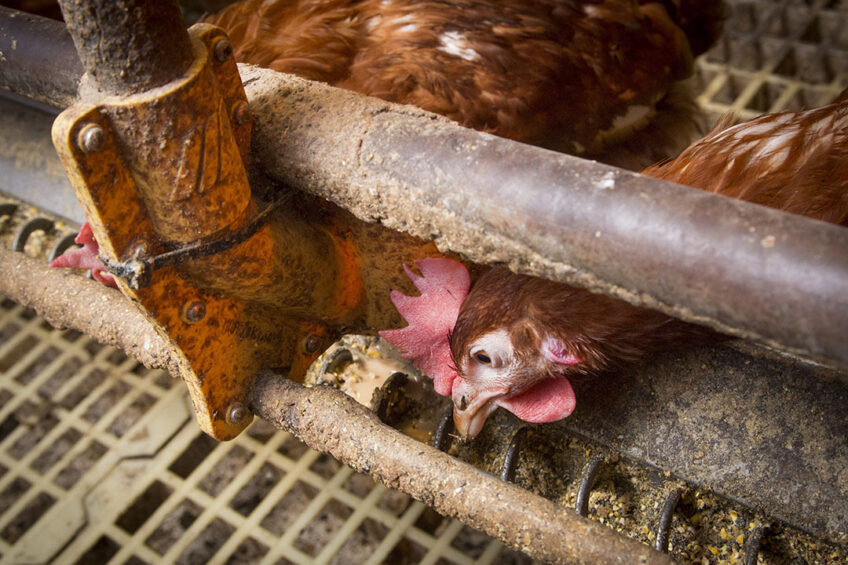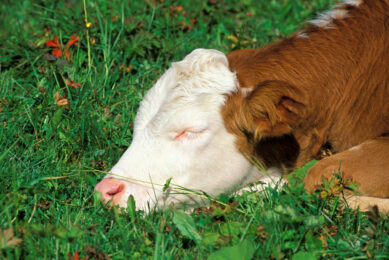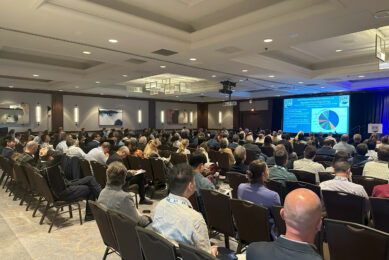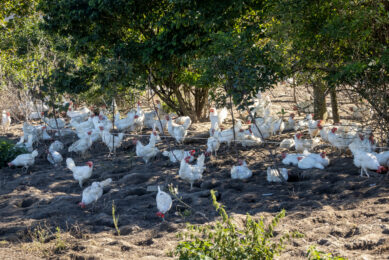Plant extract of Pueraria valuable additive for laying hens

Enhancing the performance of laying hens after the peak laying period is of great economic value. In research published in the Poultry Science journal, the plant extract puerarin proved to be a valuable feed additive that can improve laying hen performance and egg quality beyond the peak laying period.
In general, most laying hens will be at their peak production at about 30 weeks of age. As the hens age, egg size and egg count will gradually drop, with several physiological changes explaining the observed drop in production.
Physiological problems of hens in late laying period
Studies show that, with increasing age, laying hens are prone to oxidative stress and chronic inflammation, which lead to a decline in production performance and egg quality. The main physiological problems of laying hens in the late laying period include deterioration of the reproductive system, intestinal barrier dysfunction, and a decline in antioxidant and immune function. On the reproductive side, after the peak of egg production, the number of follicles decreases and the atresia rate may increase, resulting in decreased ovarian function. Other studies have observed a reduction in the calcium absorption capacity of the laying hens and the expression of intestinal calcium-binding proteins, which led to insufficient calcium intake and poor eggshell quality in the late laying period.
Improving performance beyond laying peak
On the other hand, flavonoids have been shown to have various biological activities that promote health, including anti-inflammatory, antioxidant, antibacterial and hepatoprotective properties, which suggests that they may play a role in improving laying hen performance beyond the peak period. Puerarin is a biologically active isoflavone glycoside that is structurally similar to oestradiol and thus exhibits oestrogen-like effects while reducing oxidative stress in animals. Puerarin is the major bioactive ingredient isolated from the root of the plant Pueraria montana var. lobata, also known as East Asian arrowroot. As recent research demonstrates that age-related functional decline in biological systems can be slowed by nutritional interventions, researchers working on the current study thought studying the effects of puerarin on hen laying performance after the peak laying period could be of great economic value.
Dietary levels of puerarin
In this study, researchers assessed the impact of varied dietary levels of puerarin on the production performance, egg quality, endocrine hormones, antioxidant capacity and intestinal morphology in aged laying hens. They used Hy-Line Brown hens aged 480 days and divided them into four groups (the 4 groups were made up of diets containing 0, 200, 400, and 800 mg/kg of puerarin) during a 42-day experimental period.
Improving laying performance and egg quality
The results of the study indicated that adding puerarin to the diet effectively improves the production performance and egg quality of laying hens (Table 1). The results showed higher laying rate and egg weight in the hens supplemented with puerarin compared to a control group. The feed conversion ratio (FCR) of puerarin-supplemented hens was improved by approximately 1%, 5% and 4% with the inclusion of puerarin at 200, 400, and 800 mg/kg, respectively.
Egg quality is a core factor in the development of the laying hen industry. Albumen quality, which is the standard for measuring egg quality, is measured using albumen height and Haugh units (HU); both albumen height and HU exhibit a diminishing trajectory as hens age. Results of the study indicated that the addition of puerarin enhances egg quality; compared to the control group, albumen height, yolk weight, eggshell strength and HU were all increased in the dietary groups supplemented with puerarin.
Our results demonstrate that puerarin can be used as a functional feed additive to prolong the economic benefits for aged laying hens
Puerarin regulates antioxidant activity and hormonal levels
Studies show that oxidative damage plays a key role in the pathological processes involved in ageing and age-related disorders, thus augmenting appropriate levels of antioxidants and free radical scavengers has the potential to decelerate the ageing process. Superoxide dismutase, glutathione peroxidase and catalase are the main endogenous antioxidant enzymes that combat oxidative stress, forming a line of defence against reactive oxygen species (ROS) damage. Similarly, malondialdehyde (MDA), which is a product of lipid peroxidation produced during oxidative stress, is used as an index to measure the degree of oxidative stress in the cell.
In the current investigation, the researchers found that puerarin supplementation enhances serum antioxidant capacity in post-peak laying hens; there was a notable increase in serum antioxidant activity observed through high levels of total antioxidant capacity (T-AOC), superoxide dismutase, glutathione peroxidase and catalase. To further confirm the antioxidant capacity of puerarin, the researchers also found a significant reduction in serum MDA levels following supplementation of the additive to the laying hens’ diet.
In this study, supplementation with puerarin also increased serum levels of luteinising hormone and follicle-stimulating hormone, hormones which stimulate E2 production; the researchers highlighted the fact that, since there is a dose-dependent relationship between plasma E2 and oviduct growth, E2 reflects ovarian follicular development, which, in turn, predicts enhanced egg production.
Enhancing intestinal morphology and barrier function
An increase in villus height indicates an increase in surface area for nutrient absorption and consequently improved performance. In this study, supplementation with puerarin increased the villus height and the villus height/crypt depth ratio in the jejunum and ileum; based on this observation, the researchers concluded that dietary addition of puerarin prevents intestinal villus degeneration in aged laying hens and maintains normal intestinal morphology.
Integrity of the intestinal mucosal barrier is necessary for intestinal epithelial cells to perform normal functions and resist pathogenic bacteria. Intestinal barrier proteins or tight junction proteins are known intestinal mucosal barriers, which prevent the transfer of pathogens, antigens, and intraluminal toxins into the systemic blood circulation. In this study, dietary puerarin supplementation upregulated the mRNA expression of claudin-1 and claudin-2 tight junction proteins in the mucosa of the jejunum and ileum, indicating enhancement of the intestinal barrier function.
Extending the economic benefits for off-peak laying hens
In conclusion, dietary supplementation with puerarin increased laying performance and egg quality by improving the antioxidant state, promoting the secretion of hormones, preserving intestinal morphology and regulating the expression of intestinal barrier-associated genes in aged laying hens. “Our results demonstrate that puerarin can be used as a functional feed additive to prolong the economic benefits for aged laying hens,” the researchers concluded.
This article was based on the publication: Effects of puerarin as a feed additive on the laying performance, egg quality, endocrine hormones, antioxidant capacity, and intestinal morphology of aged laying hens. Poultry Science, Vol 103, Issue 5, 2024.











